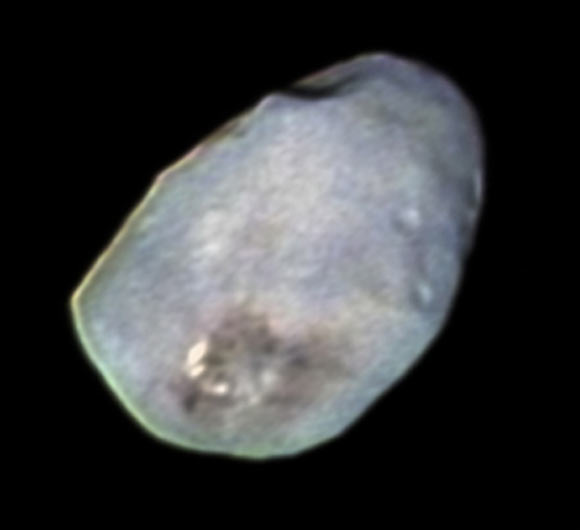The latest data from NASA’s New Horizons probe reveal a water-ice signature on the surface of Nix, one of Pluto’s five known moons.

This New Horizons image shows Pluto’s small moon Nix. Image credit: NASA / Johns Hopkins University Applied Physics Laboratory / Southwest Research Institute.
“Pluto’s small satellites probably all formed out of the cloud of debris created by the impact of a small planet onto a young Pluto,” said Dr. Hal Weaver from the Johns Hopkins University Applied Physics Laboratory, a scientist on the New Horizons mission.
“So we would expect them all to be made of similar material,” he added.
“The strong signature of water-ice absorption on the surfaces of Pluto’s moons Charon, Nix and Hydra adds weight to this scenario.”
“Although we didn’t collect spectra of Pluto’s two tiniest satellites, Styx and Kerberos, their high reflectivity argues that they are also likely to have water-ice surfaces,” Dr. Weaver said.
The new observations of Nix were made with New Horizons’ Linear Etalon Imaging Spectral Array (LEISA) imager on July 14, 2015, from a distance of 37,000 miles (60,000 km).
The deeper spectral features on Nix are a signature of water ice that is relatively coarse-grained and pure, because the shape and depth of water-ice absorption depends on the size and purity of the icy grains on the surface.
Scattering from smaller, or less pure, icy grains tends to wash out spectral absorption features, making them shallower.

A comparison of the compositional spectra of Charon, Nix and Hydra to pure water ice. Nix’s surface displays the deepest water-ice bands seen among Pluto’s satellites. Image credit: NASA / Johns Hopkins University Applied Physics Laboratory / Southwest Research Institute.
According to the New Horizons science team, the difference in the depths of the water ice absorption features in the Nix and Hydra spectra raises new questions.
Specifically, the scientists are puzzling over why Nix and Hydra apparently have different ice textures on their surfaces, despite their similar sizes.
Another mystery resulting from New Horizons data is why Hydra’s surface reflectivity at visible wavelengths is higher than Nix’s, even though Nix’s surface appears to be icier, implying higher reflectivity at visible wavelengths.







